How to Make Probiotic Ginger Beer – a naturally fermented probiotic drink that is packed with health benefits. This article includes a photo tutorial, information on secondary fermentation, flavoring your ginger beer, and troubleshooting when the process goes awry.
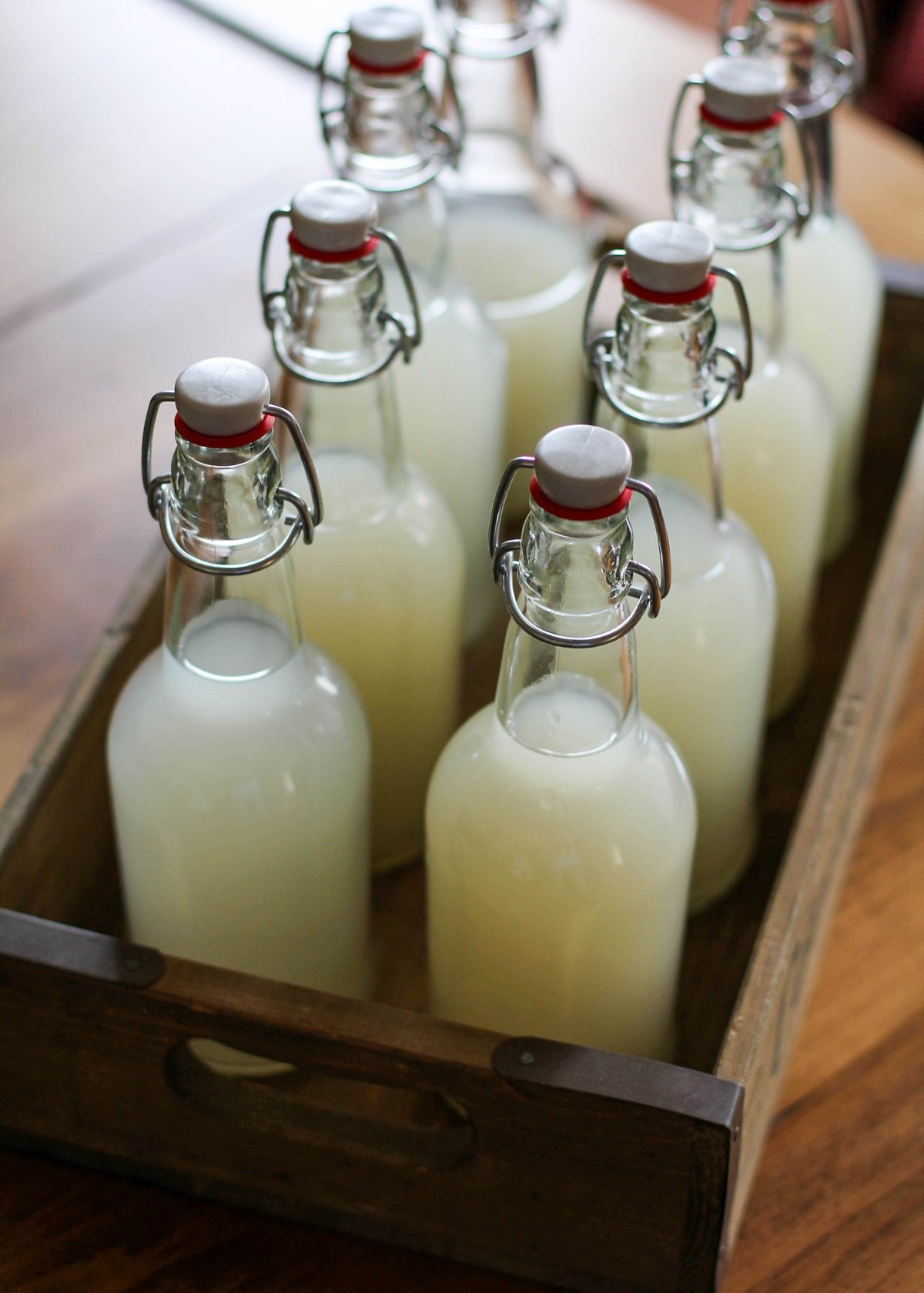
Disclaimer: brewing probiotic beverages at home can be risky. When fermenting probiotc foods and beverages, use caution. Always use sanitized tools and when in doubt, throw it out! If you notice any strange smells or mold, be sure to discard the whole batch.
Many moons ago, I wrote a cookbook called Delicious Probiotic Drinks. This cookbook is focused entirely on making probiotic-rich beverages such as kombucha, kefir, ginger beer, fermented vegetable juice, and more, at home.
My favorite of all the fermented beverages to make is ginger beer. First and foremost, it is magnificent tasting.
Secondly, it is CHALLENGING.
Perhaps the most challenging and unforgiving of all the fermented drinks.
And for that reason, the most rewarding.
For those of you who have been around this site for a long time, you may remember my easy tutorial on How to Make Ginger Beer.
This is the goof-proof method that works each and every time and does not require much time or attention.
This version of probiotic ginger beer is different. It involves preparing a “ginger bug” (or ginger starter) from scratch.
How does that work?
Probiotics and yeast are naturally occurring everywhere. They are in our fruit and vegetables and are also present in the air. Giving these probiotics and yeast optimal conditions to grow and reproduce results in fermentation.
You’re already familiar with this concept, as it is the same process for creating yogurt, cheese, beer, wine, pickles, prosciutto (and other fermented meats), etc.
Applying this idea to fresh ginger is how we create a ginger starter, which is then used to make ginger beer.
Don’t worry…I’ll go over how to make a ginger starter in excruciating detail later on in this post. First, let’s cover some basics.
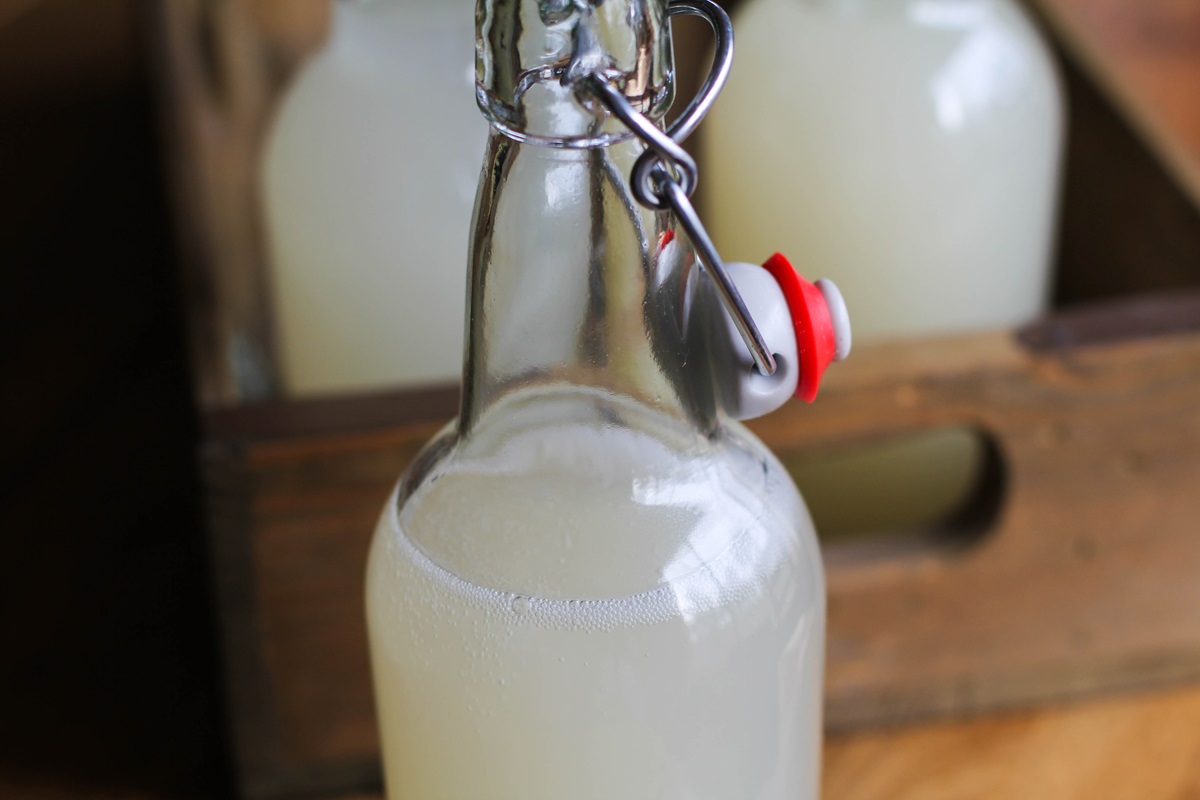
WHAT IS GINGER BEER?
Ginger beer is a naturally fizzy beverage with a sweet and spicy bite. Grated ginger is fermented in sugar water and lemon juice, allowing the natural yeasts in ginger to feed and multiply, creating a probiotic beverage.
While ginger beer is a sweet, spicy, delicious beverage all on its own, it is famous for its role in cocktails, particularly the Dark & Stormy cocktail, a mixture of ginger beer and rum, garnished with a slice of lime.
WHAT IS THE DIFFERENCE BETWEEN GINGER BEER AND GINGER ALE?
The phrases, “ginger beer” and “ginger ale” are typically used interchangeably, but there is a difference between the two beverages. Ginger beer is fermented for up to 2 or 3 weeks using a “ginger bug,” where ginger ale is more of a ginger flavored soda.
While there are ginger ale beverages made with real ginger, most ginger ales are simply carbonated water with ginger flavor and sugar. In this sense, ginger ale does not go through the same fermentation process that ginger beer does.
METHODS FOR MAKING GINGER BEER
There are multiple ways to make ginger beer. Here are three of the most common methods:
- Non-probiotic ginger soda/ale: For those who aren’t concerned about the probiotic benefit of fermented ginger beer, you can simply combine ginger simple syrup (made with ginger and sugar) with soda water and achieve a great-tasting homemade beverage. This version contains no probiotics and is basically fancy soda.
- Quick and Easy Ginger Beer with some probiotic benefits: This fast method uses bread yeast for fermentation and requires only two days to complete. For this version, read my blog post on How to Make Ginger Beer. This version is not as probiotic rich, but is still lower in sugar than regular soda.
- Authentic Probiotic Ginger Beer – a health elixir: The authentic method for making fermented ginger beer is outlined in this post. It uses a probiotic-rich “ginger bug” (or ginger starter) which you make yourself at home. Like most things in life, the authentic version takes much longer than the easy version, but also yields great results. This version can take between 2 and 3 weeks to complete.
HEALTH BENEFITS OF GINGER BEER
Fermented ginger beer has a great deal of health benefits and is commonly used to ease upset stomach, nausea or diarrhea.
Ginger is an anti-inflammatory, which can help with migraines, and studies show fresh ginger prevents and fights several types of cancer cells including breast, colon, ovarian, prostate, and lung cancer.
Ginger is also known for cleansing the body of toxic chemicals, easing menstrual cramps, and much more!
The probiotics and yeast that grow during the fermentation process help colonize your gut with good bacteria, which helps boost immunity, fight disease, and promotes overall health.
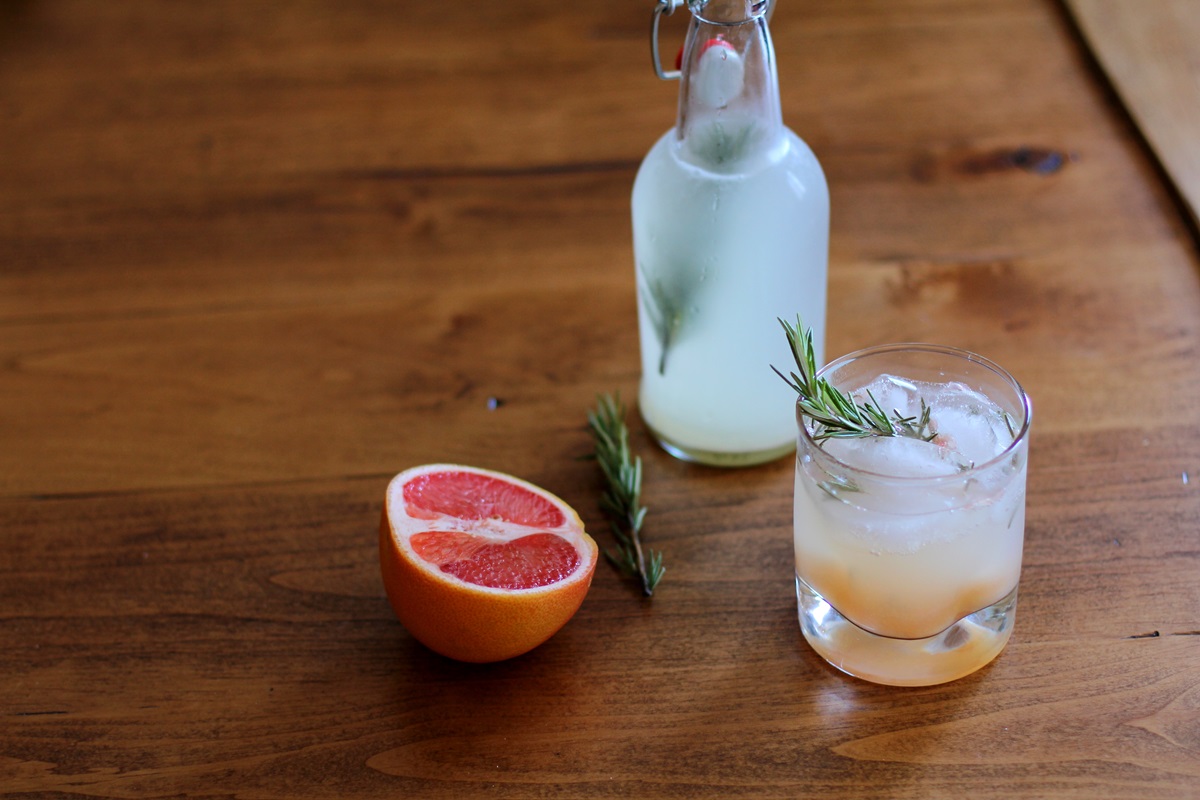
HOW TO MAKE FERMENTED PROBIOTIC GINGER BEER
Fermented probiotic ginger beer requires a three-step process.
Step 1: Make a “ginger bug” or starter using fresh ginger, water, sugar and lemon juice. This starter is used to brew a batch of ginger beer (Step 2). This can take 1 to 2 weeks to complete (depending on the temperature of your home and how active your culture decides to be).
Step 2: Brew a large batch of ginger beer using the “ginger bug.” You could compare this process to making a batch of sourdough bread dough using sourdough starter. This process takes about 1 to 3 weeks, depending on how active your ginger bug is and how warm your home is.
Step 3: Bottle the ginger beer and allow it to ferment further. Once the beverage becomes effervescent (fizzy/probiotic-rich), bottle it and allow it to sit for “secondary fermentation” (more on this below). This process takes about 2 to 5 days.
You Will Need:
- 1-quart glass jar or jug
- Cheesecloth
- Stretchy rubber band
- 1-gallon glass jug
- Flip-Cap Bottles
- Fresh ginger
- Organic Cane Sugar
- 2 to 4 Lemons
Ingredients for the “Ginger Bug:”
- 1-inch nub fresh ginger, peeled and grated, plus more for feeding the starter
- 1 tablespoon raw organic sugar, plus more for growing the starter
- 2 cups water
Instructions for the Ginger Bug / Ginger Starter:
Peel and grate a 1-inch nub of fresh ginger (about 1 tablespoon).
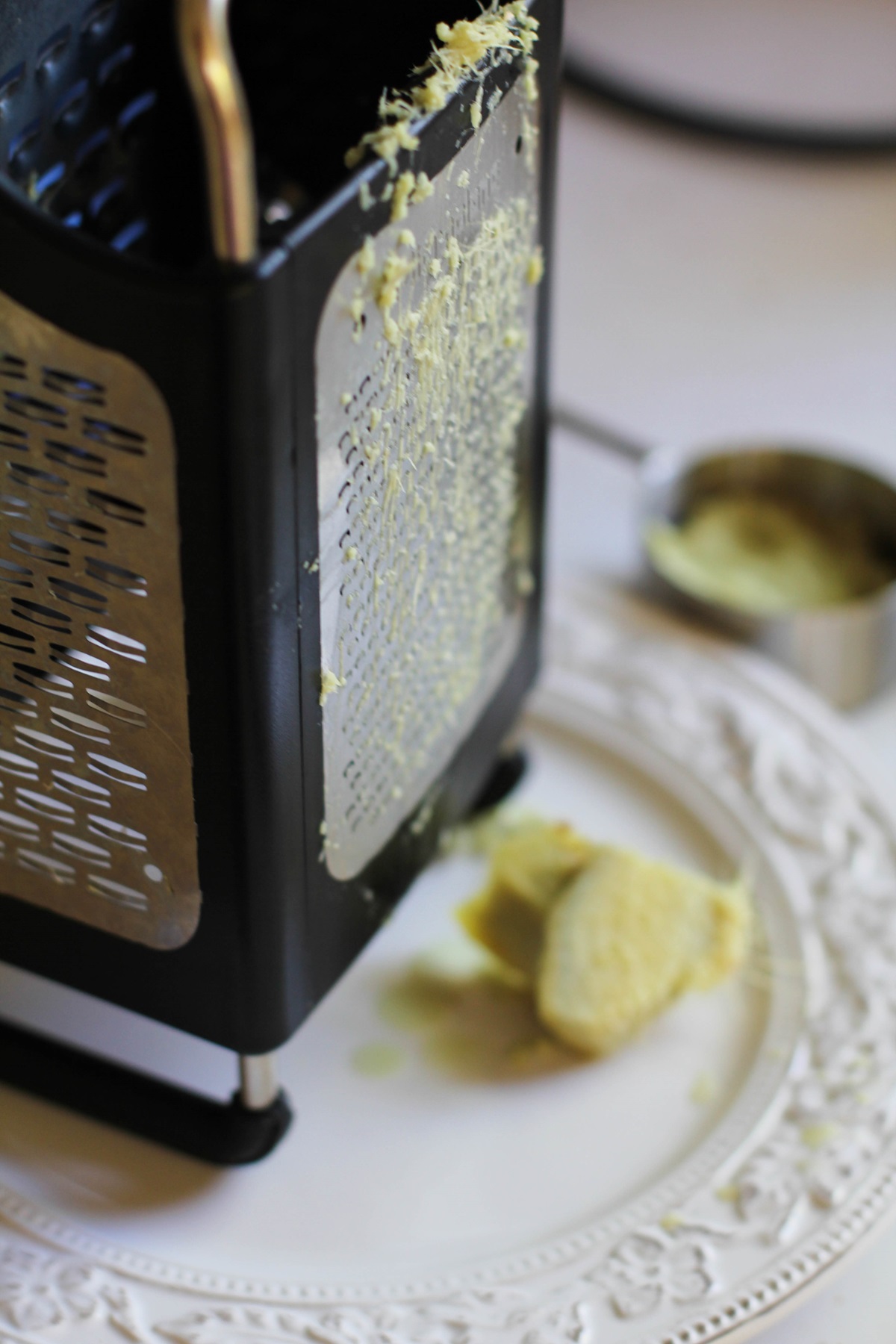
Add the grated ginger, 1 tablespoon of sugar, and two cups of filtered water or spring water (non-chlorinated) to the jar and stir (a 1-quart jar works great).
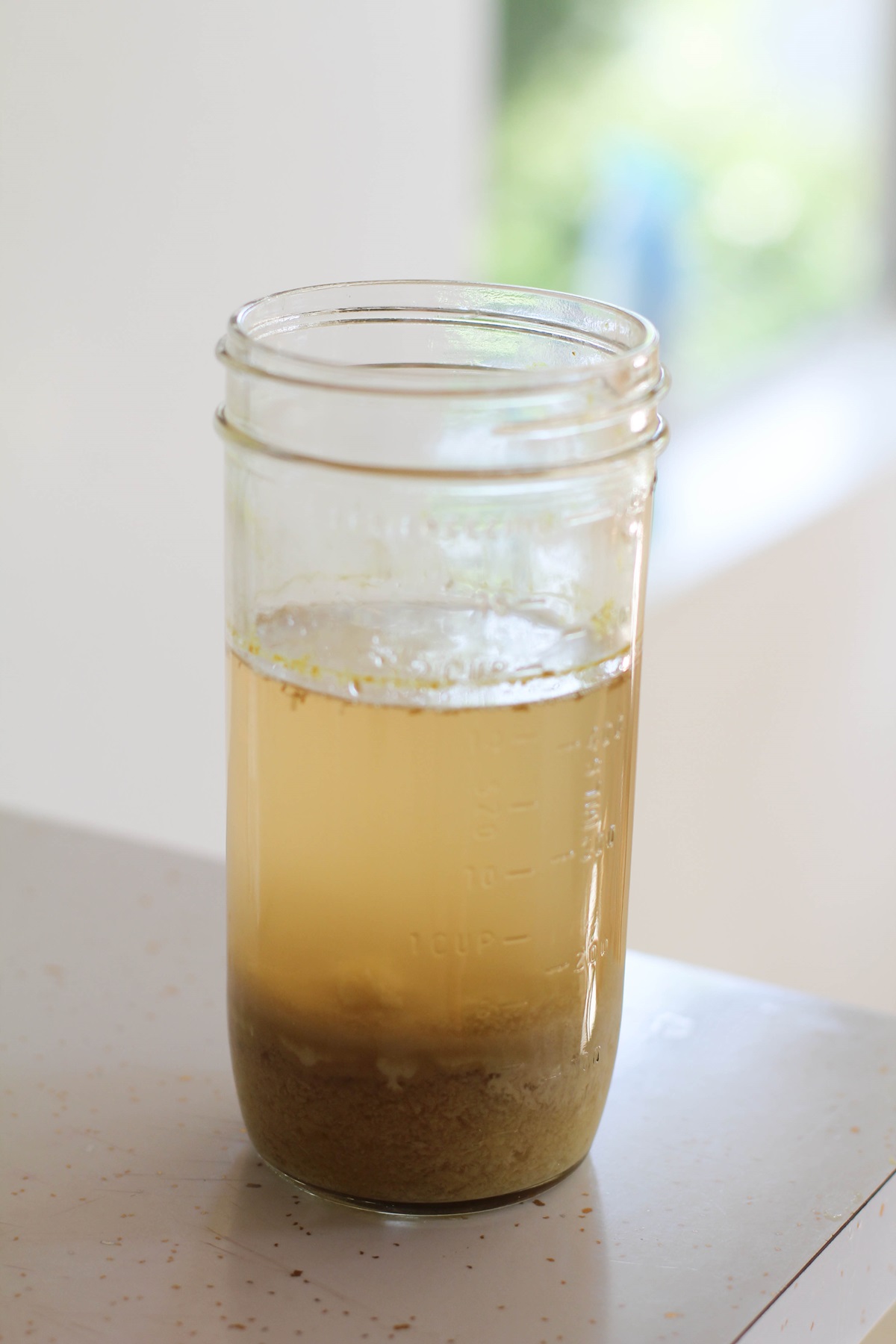
Cover the jar with a cheesecloth or towel. Secure the cloth around the jar with a rubber band. This keeps insects away from the starter.
Allow jar to sit in a warm, dark place for 24 hours. The optimal temperature for preparing the ginger starter and brewing ginger beer is between 70 and 85 degrees.
If your house stays cool, find the warmest spot in your home to place the ginger starter. This process activates the probiotics and yeast that are in the ginger and allows them to begin reproducing.
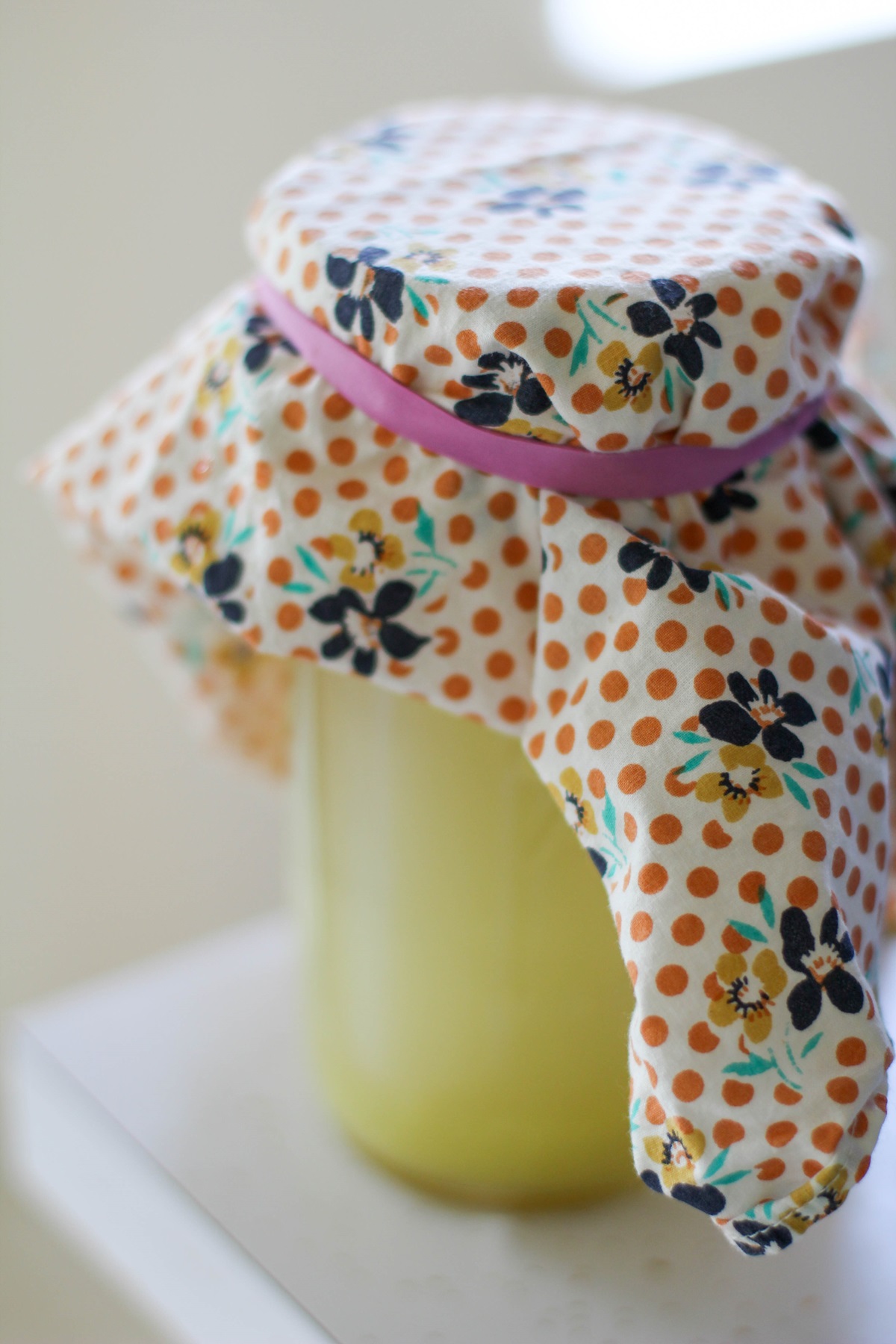
Feed the colony – Once a day for one week, add one teaspoon of sugar and one teaspoon of grated fresh ginger to the jar and stir well.
This ensures your ginger starter stays fed and grows, similar to sourdough starter. Stir a couple of times per day.
During this process, natural yeasts are released and create a white substance at the bottom of the jar. This is where the probiotics come from.
After about 3 to 5 days (perhaps longer if your house is very cold), the liquid will begin bubbling when you stir it. Once you can see and hear bubbles without touching the jar, your ginger bug is ready to be used. This will usually take 7 to 10 days in a warm (70 to 80 degrees F) house, but longer in a cool house.
To expedite the process, wrap the ginger starter jar in a heat blanket or an insulated blanket to keep it warm. If after 7 days, your ginger bug is still not bubbling, continue adding a teaspoon of sugar and ginger until it does. Have patience, friend!
In some cases, folks have gotten bubbles within only a few days of beginning their starter. While this is unusual, it is a sign the starter is ready! As soon as you see the bubbles rushing from the bottom to the top, you’re ready to go.
Use the liquid from ginger starter to make ginger beer (instructions below).
You can continue adding water, ginger, and sugar to the starter and to use it for multiple batches of ginger beer. In this sense, you can treat your ginger starter the same way one would treat sourdough starter and keep it alive.
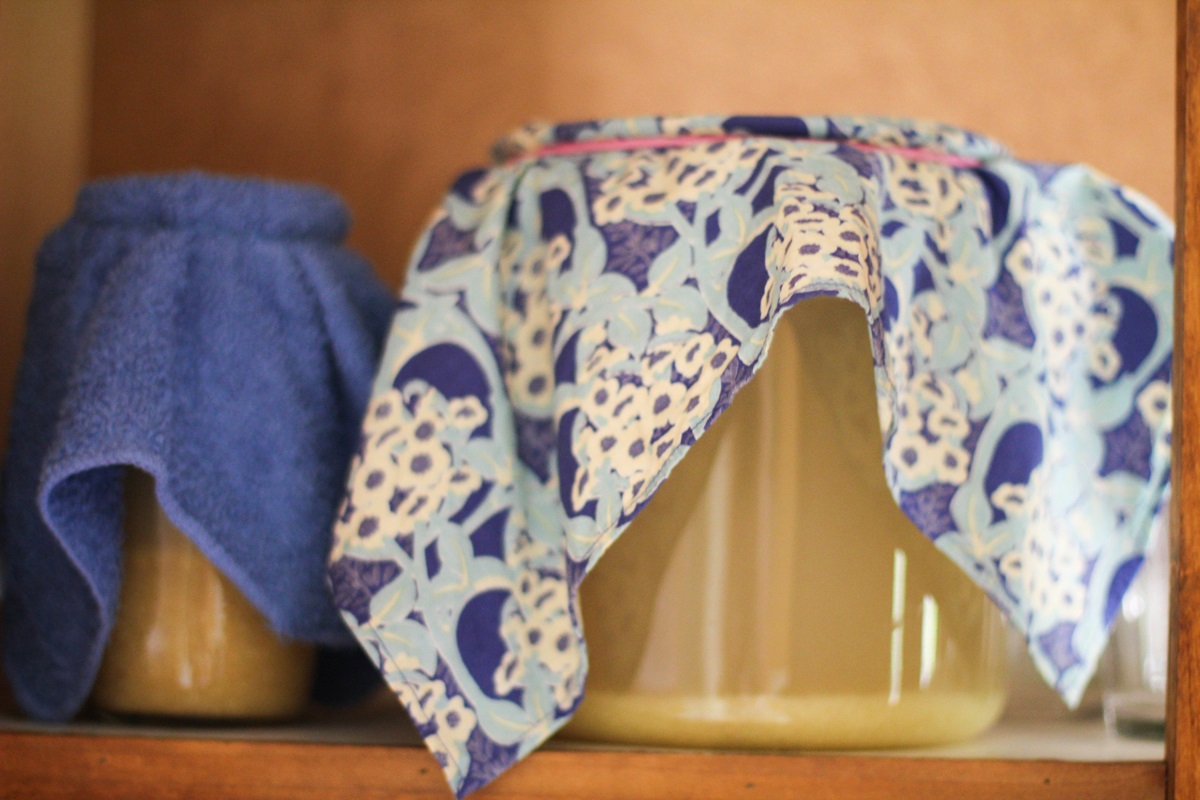
Note: If you ever see mold floating on top of the starter liquid, discard the starter and make a new one.
Ingredients for the Ginger Beer:
- 1 cup ginger starter (see above)
- 1 scant gallon of filtered spring or well water
- 1 1/4 cups organic cane sugar
- 1/2 cup fresh lemon juice
- 1/3 cup fresh ginger, grated
Instructions for 1 Gallon of Probiotic Ginger Beer:
Fill a gallon-sized jug most of the way up with spring or well water (do not use water from the tap unless your house runs on a well). This water should be room temperature or slightly warmer (aim for 70 to 80 degrees).
Add one cup the the ginger starter, along with 1 1/4 cups of sugar, 1/2 cup of lemon juice, and 1/3 cup of grated ginger. Stir very well.
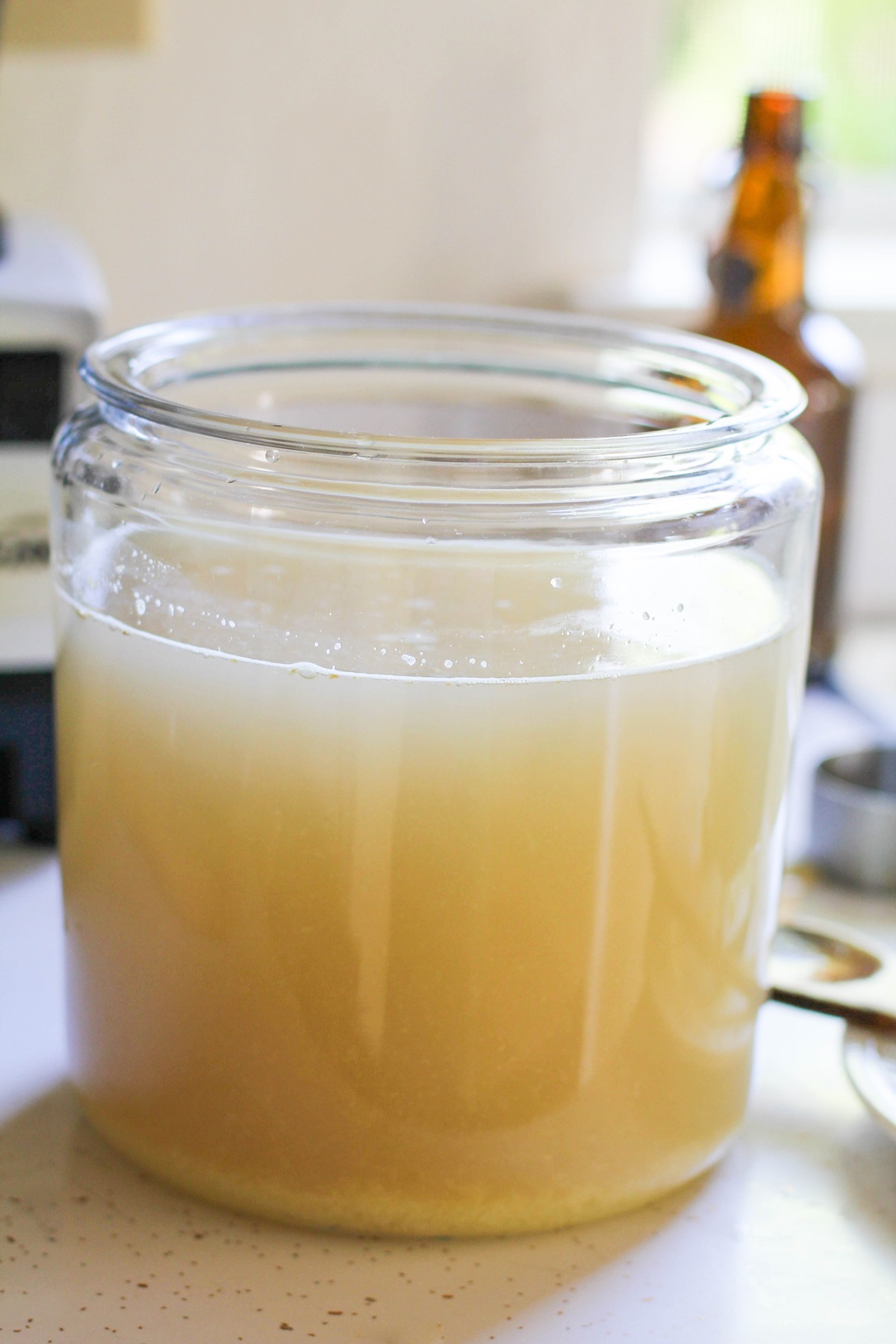
Cover the jug with a cheesecloth or towel bound by a rubber band and put it in a warm, dark place at room temperature for 8 to 10 days. Mine takes 8 days, even in a very warm (80⁰F +) house.
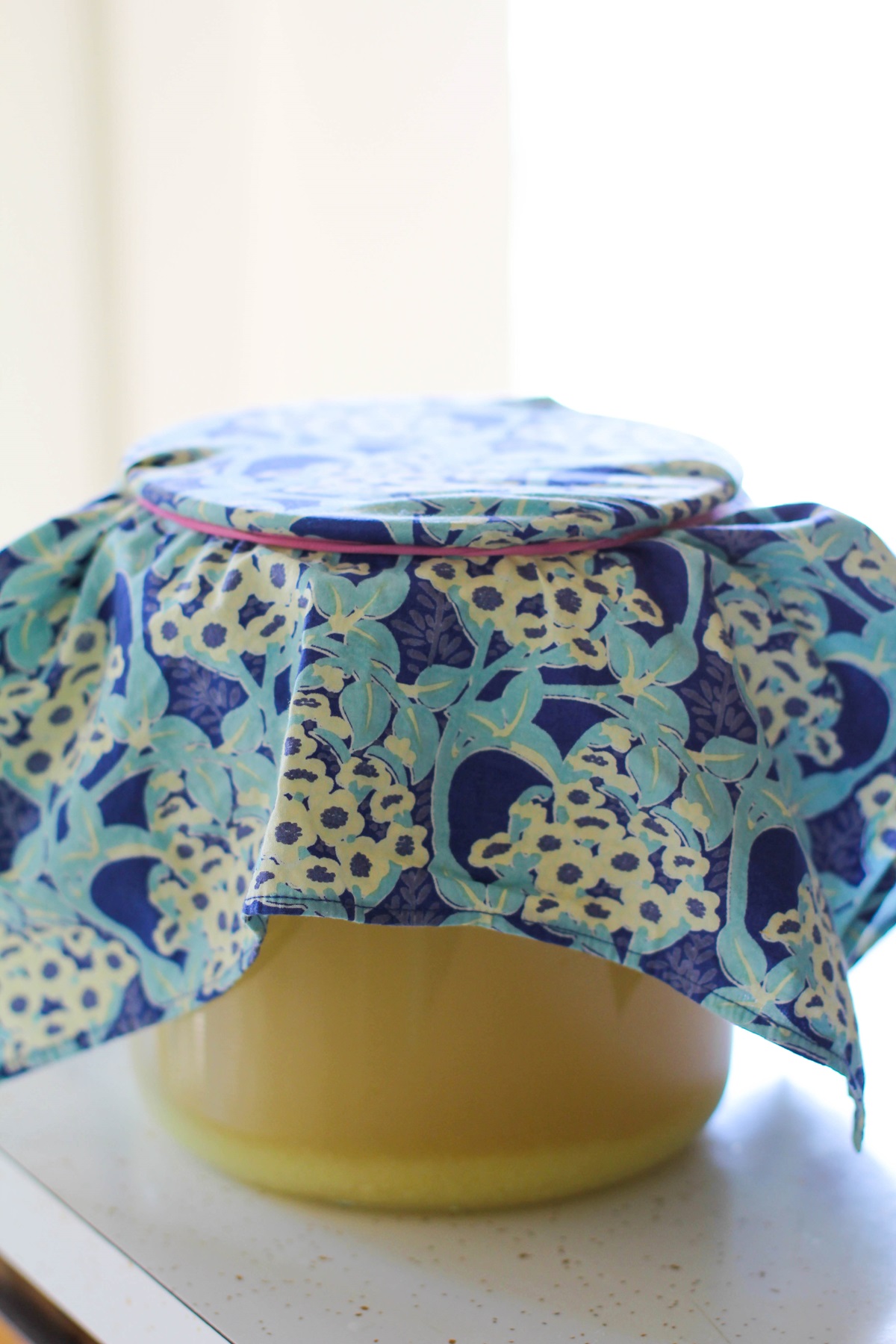
Taste-test the mixture periodically to see if more sugar needs to be added (the natural probiotics will eat the sugar so if the beverage ever loses all of its sweetness, add a little more sugar (no more than 2 tablespoons at a time), but be careful to not overload the probiotics, as they can die when given too much sugar.
Stir the mixture once or twice a day. You will notice a white substance forming around the ginger at the bottom of the jug.
This is the natural yeasts coming out of the ginger – it’s a good sign! There will also be large bubbles that form on the surface of the liquid.
The ginger beer is ready when the substance becomes bubbly when stirred (similar to when you’re making the ginger starter).
Once the ginger beer is ready, give it a taste test. If it doesn’t taste sweet, add additional sugar and ginger because once you bottle the brew, it goes through secondary fermentation and the probiotics continue to need to eat sugar.
At this point, your options are to either bottle the ginger beer as-is or flavor it prior to bottling it. See information on Secondary Fermentation and flavoring options below.
Pour the liquid (including the ginger pulp) into sealable bottles and set them in a dark room for 2 to 4 days. This process makes the ginger beer very fizzy.
The warmer the room, the faster the beverage gets fizzy, so open a bottle every day or so to check the fizz and level of sweetness.
Both the fizz and sweetness is up to your taste but be very careful to not allow the bottles to sit for too long because they most definitely will explode.
Place bottles in the refrigerator to calm the fermentation process. Note that the ginger beer will continue to ferment in the refrigerator, so try to consume the beverage within a few days after secondary fermentation is complete for best results.
Leaving it in the refrigerator for longer than a week will result in a “drier”, less sweet ginger beer.
You can now brew another batch of ginger beer using the ginger starter you have been feeding. Because your ginger starter is now more mature, it will take a little less time to brew your second batch.
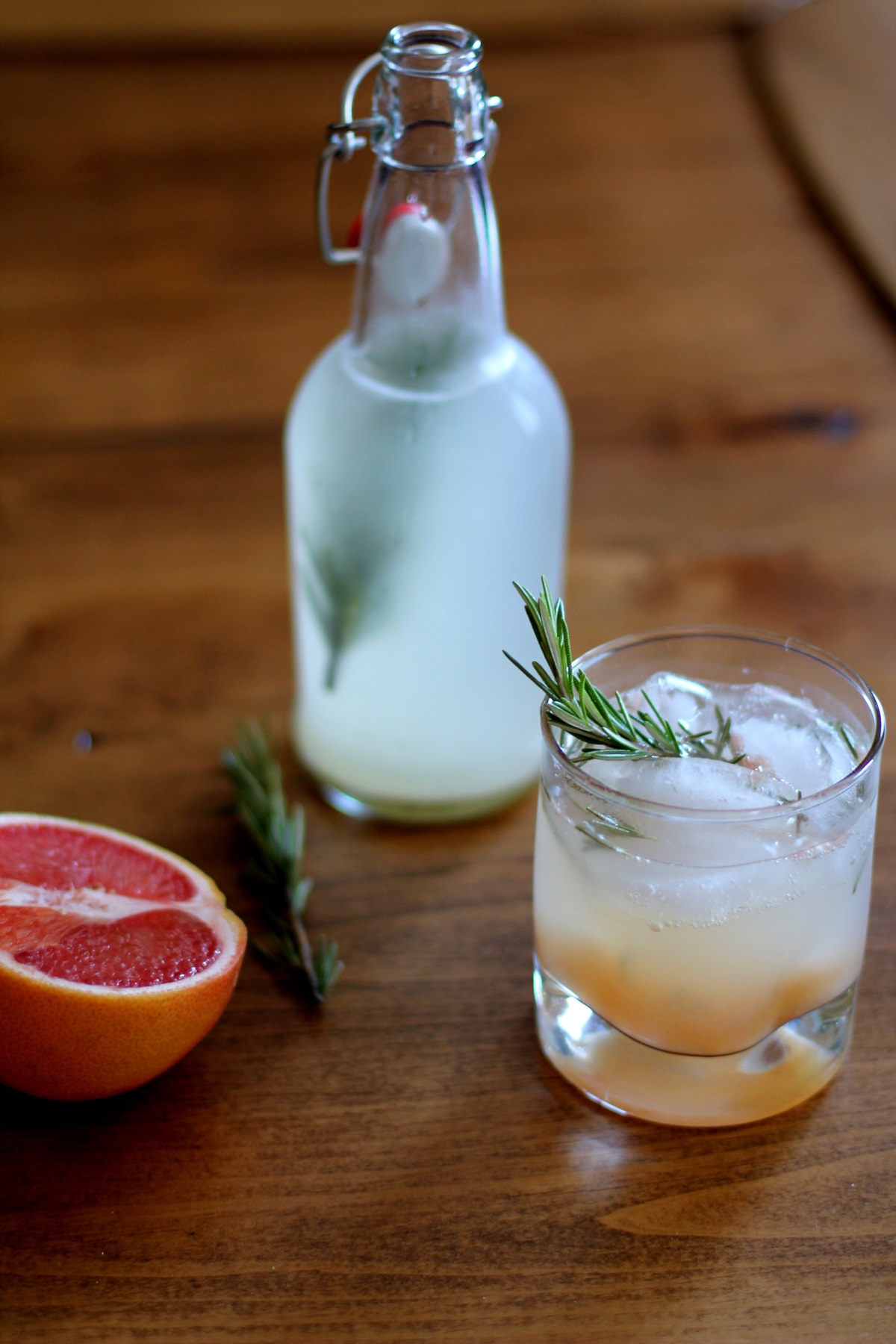
SECONDARY FERMENTATION
Once ginger beer is finished with its primary fermentation, you may add additional sugar and/or ingredients (see “Flavoring Ginger Beer” section below) to flavor it and allow it to go through a secondary fermentation.
The purpose of secondary fermentation is threefold: To achieve a fizzy beverage (it will get just as fizzy, if not fizzier than soda!), to make the drink even more probiotic-rich, and to give it delicious flavor.
FLAVORING GINGER BEER
Ginger beer is perhaps the easiest probiotic drinks to flavor because just about any type of fruit and/or herb goes wonderfully with ginger.
The fact that there is already a great deal of sweet and spicy flavor in ginger beer provides a wonderful canvas for incorporating other sweet, sour, tart or creamy flavors.
In this way, the added ingredients are typically what one tastes first when drinking the ginger beer, with the spicy ginger coming through at the finish.
You have a few options for adding ingredients for secondary fermentation. You can add fresh fruit juice, a homemade simple syrup infused with any flavor you like, or a fruit/herb sauce (similar concept to simple syrup).
If you’re adding fruit juice, simply add 1/4 cup to each glass bottle before filling them the rest of the way up with ginger beer. Secure the lids tightly and allow them to sit for 2 days. Immediately transfer to the refrigerator to slow the fermentation process.
Getting creative with fruit and herb combinations is brilliant when it comes to this drink and you are virtually guaranteed to end up with a delicious probiotic drink!
To make flavor ginger beer, choose your fresh fruit and/or fresh herbs.
Combine 2 cups of fresh fruit with ½ cup cane sugar and 1/3 cup water in a saucepan (Note: if you’re adding fresh herbs, do so here as well).
Bring to a full boil and cook until the fruit has softened. Allow mixture to cool completely. Once cool, divide it between the bottles you are using to bottle the ginger beer.
Fill the bottles the rest of the way up with ginger beer, seal tightly, and allow bottles to sit at room temperature for 2 days to undergo secondary fermentation. Transfer the bottles of ginger beer to the refrigerator and chill.
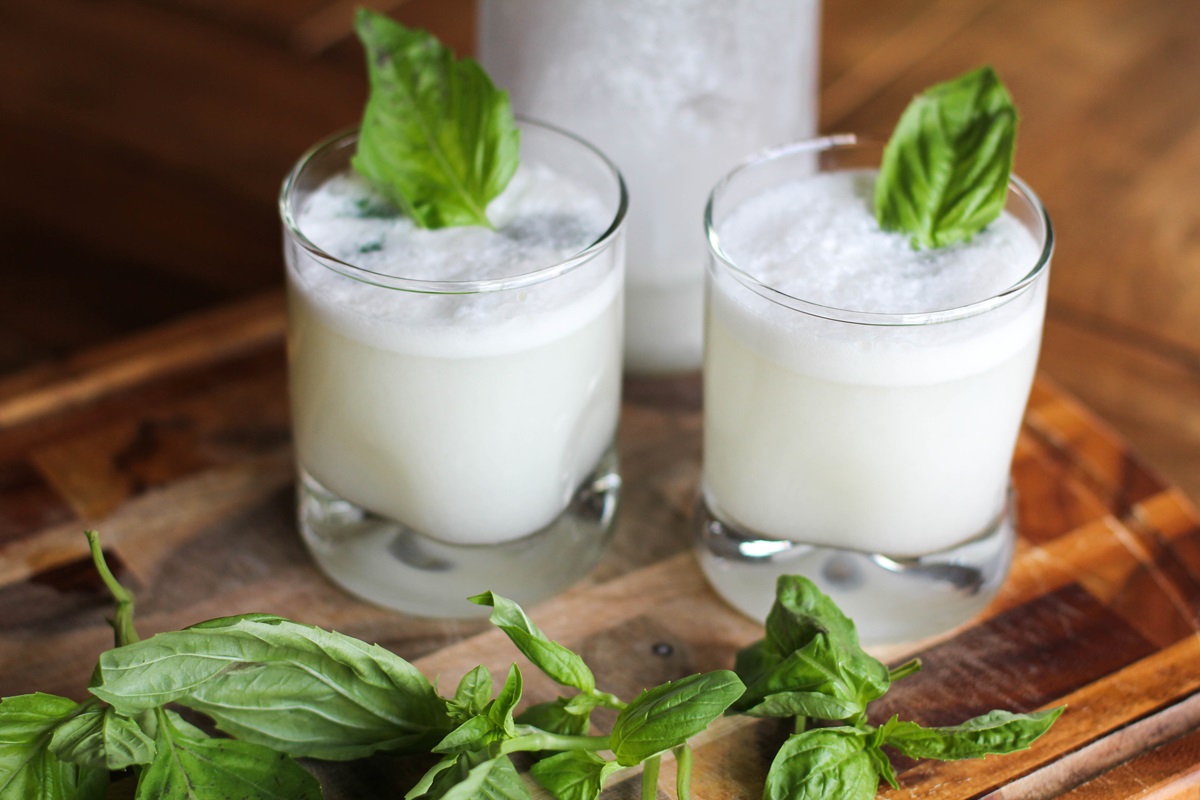
Flavored Ginger Beer Options:
Here are some of my favorite flavor combinations for ginger beer:
- Blackberry Sage (2 cups blackberries, 1/2 cup sugar, 1/3 cup fresh sage, packed)
- Grapefruit Rosemary (1 cup fresh grapefruit juice, 2/3 cup sugar, 3 sprigs rosemary)
- Coconut Basil (1 can full-fat coconut milk, 1/2 cup sugar, 1/2 cup fresh basil, packed)
- Blood Orange (1 cup fresh blood orange juice, 1/2 cup sugar)
- Raspberry Mint (2 cups fresh raspberries, 1/2 cup sugar, 1/2 cup fresh mint)
SHELF LIFE OF GINGER BEER
How long does homemade ginger beer last?
When properly sealed in bottles, plain ginger beer can last for up to one month in the refrigerator. For best results, drink within 2 weeks of brewing.
When ingredients such as fruit, are added to ginger beer, consume within 1 week for best results and keep in the refrigerator for up to 2 weeks. While ginger beer can last even longer than this, it is best to err on the safe side when it comes to probiotics.
A NOTE OF CAUTION
As is always the case with probiotic beverage, be cautious when opening a bottle after secondary fermentation as pressure builds and the drink will be fizzy. Never point a bottle at your face (or at any other person) while opening, and never hand a bottle to a child to open.
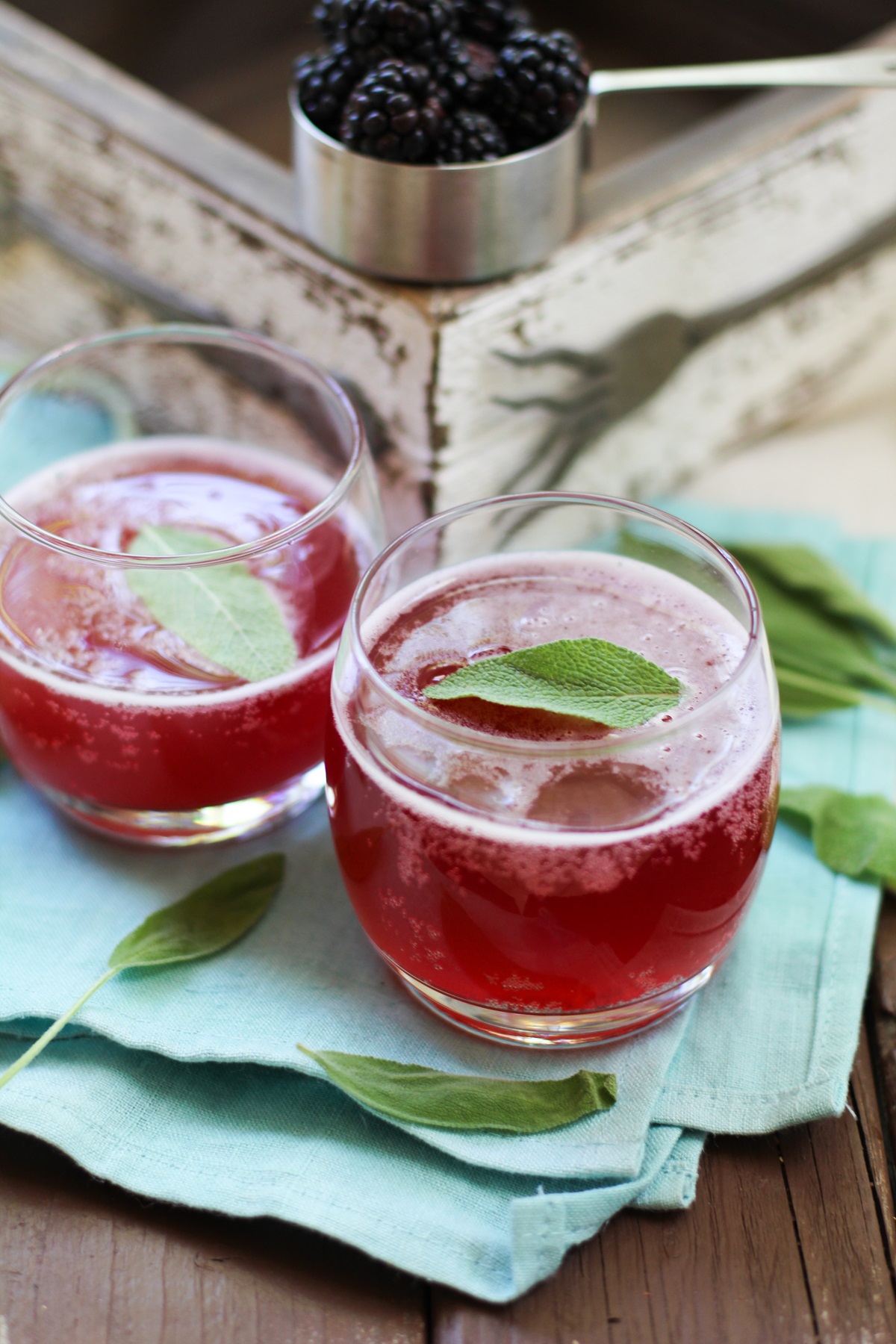
TROUBLESHOOTING
If it seems like either your ginger starter or ginger beer is taking a long time to come to life (get bubbly), don’t worry. This is likely the result of the temperature of your home, and it may just take some extra time.
As mentioned previously, if you want to expedite the process, wrap the jar in a heating pad and set it to a low temperature to keep the starter warm.
On the flipside, in rare cases, a ginger starter may be ready after only a few days. As long as bubbles are flowing from the bottom to the top, that is a sign the starter is rich in probiotics and is ready to be put to use.
Like many probiotic beverages, ginger beer is one of those that seems to be doing nothing for quite some time and then all of a sudden, it’s working.
At the end of secondary fermentation, if your ginger beer too dry (not sweet and very fizzy), this is because the yeast consumed all of the sugar that was in the bottle, leaving very little sweetness for you.
Some people prefer drier ginger beer, but if you prefer it to be on the sweet side, simply make sure you add additional sugar (either cane sugar, fruit, or juice) prior to bottling your next batch.
Did you pop open a bottle of ginger beer after 3 days of secondary fermentation and it wasn’t fizzy and it still tasted sweet? If this is the case, your ginger beer still contains residual sugar that needs to get eaten up by the probiotics. This is okay!
Simply leave the remaining bottles (if any) at room temperature to continue secondary fermentation. Because there was plenty of sugar in the beverage prior to bottling, it will simply take an additional day or two for the probiotics to consume the sugar and for the beverage to become fizzy.
How to Prevent Flat Ginger Beer:
To prevent flat ginger beer, be sure there are small bubbles that rise from the bottom to the top of the liquid prior to bottling it for secondary fermentation, as this is a sign of probiotic activity. Keep in mind that even if your ginger beer does not get fizzy, it is still full of probiotics and is great for you!
Wondering if Your Batch is Bad?
If at any point you find mold on the surface of your ginger beer while it is brewing, throw the whole batch out, even if it is only a tiny bit of mold. Ginger beer is easy to re-make (especially since you already have your ginger starter ready to go), and it is not worth sacrificing quality and health even if it is frustrating to have a failed batch.
Any Questions??
I hope this post will inspire you to make your own naturally fermented healthy ginger beer at home!
Be sure to check out my cookbook, Delicious Probiotic Drinks for more recipes for fermented beverages!
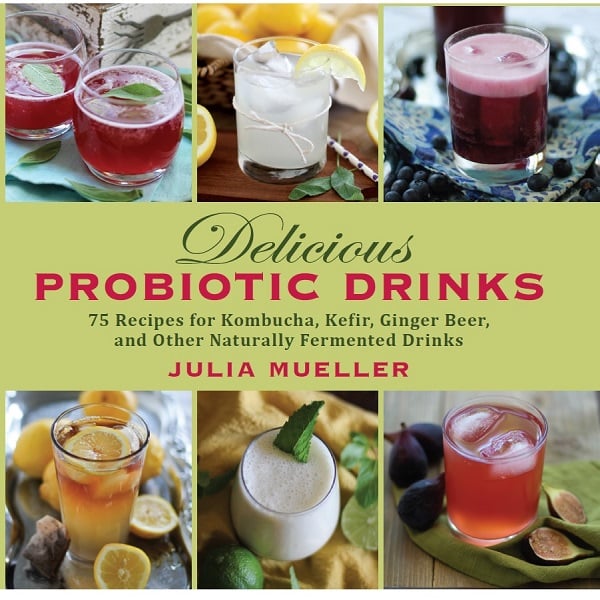
If you enjoy home fermentation projects, also check out my tutorial on How to Brew Kombucha.
Check out my latest cookbook, Paleo Power Bowls for nutrient-dense meal recipes.
If you make ginger beer, feel free to share a photo on Instagram and tag @The.Roasted.Root!
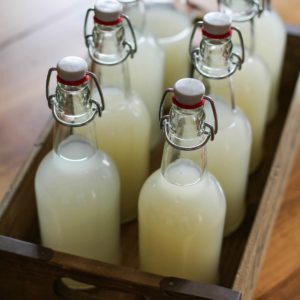
Probiotic Ginger Beer
Equipment
Ingredients
Ginger Starter:
- 1 (1-inch) nub fresh ginger, peeled and grated
- 1 Tbsp organic cane sugar
- 2 cups filtered water
Ginger Beer:
- 1 cup ginger starter instructions below
- 1 gallon filtered water or well water
- 1 1/4 cups organic cane sugar
- 1/2 cup fresh lemon juice
- 1/3 cup fresh ginger peeled and grated
Instructions
Prepare the Ginger Starter:
- Peel and grate a 1-inch nub of fresh ginger (about 1 tablespoon).
- Add the grated ginger, 1 tablespoon of sugar, and two cups of filtered water or spring water(non-chlorinated) to a jar and stir. Cover the jar with a cheesecloth or towel and secure it with a rubber band. Allow jar to sit in a dark place for 24 hours.
- Once a day for 4 to 10 days, add one teaspoon of sugar and one teaspoon of grated fresh ginger to the jar and stir well. This ensures your ginger starter stays fed and grows, similar to sourdough starter. Stir a couple of times per day. During this process, natural yeasts are released and create a white substance at the bottom of the jar. This is where the probiotics come from.
- After 3 to 5 days (longer if your house is very cold), the liquid will begin bubbling when you stir it. Once you can see and hear bubbles without touching the jar, your ginger bug is ready to be used. If after 7 days, your ginger bug is still not bubbling, continue adding a teaspoon of sugar and ginger until it does. Note that amount of time it takes to get a ginger bug active varies widely depending on the temperature of your home and the activity of the bacteria and yeast.
- Use the liquid from ginger starter to make ginger beer (instructions below).
Make the Ginger Beer:
- Fill a gallon-sized jug most of the way up with spring or well water (do not use water from the tap unless your house runs on a well). This water should be room temperature or slightly warmer (aim for 70 to 78 degrees).
- Stir the ginger starter well. Add 1 cup of the ginger starter, sugar, lemon juice, grated ginger, and the ginger starter. Stir very well. Cover the jug with a cheesecloth or towel bound by a rubber band and put it in a dark place at room temperature for 8 to 10 days.
- Taste-test the mixture periodically to see if more sugar needs to be added (the natural probiotics will eat the sugar so if the beverage ever loses all of its sweetness, add a little more sugar (no more than 2 tablespoons at a time).
- Stir the mixture once or twice a day. You will notice a white substance forming around the ginger at the bottom of the jug. The ginger beer is ready when the substance becomes bubbly when stirred (similar to when you’re making the ginger starter).
- Once the ginger beer is ready, give it a taste test. If it doesn’t taste sweet, add additional sugar and ginger – once you bottle the brew, it goes through secondary fermentation and the probiotics will need more sugar to survive.
- At this point, your options are to either bottle the ginger beer as-is or flavor it prior to bottling it. If you choose to leave the ginger beer as-is, give it a big stir and transfer the ginger beer (including all of the pulp) to glass bottles. Secure the lids, and place bottles in the refrigerator to chill.
- If you choose to flavor the ginger beer, add your flavoring ingredients to the flip cap bottles (see blog post for flavor ideas and instructions for secondary fermentation) prior to filling the bottles up with ginger beer. Secure the lids on the bottles and leave at room temperature for another 2 days.
- Place bottles in the refrigerator to calm the fermentation process. Note that the ginger beer will continue to ferment in the refrigerator, so try to consume the beverage within a few days after secondary fermentation is complete for best results. Leaving it in the refrigerator for longer than a week will result in a “drier”, less sweet ginger beer.
- You can now brew another batch of ginger beer using the ginger starter you have been feeding. Because your ginger starter is now more mature, it will take a little less time to brew your second batch.
Nutrition
This post contains affiliate links, which means I make a small commission off items you purchase at no additional cost to you.

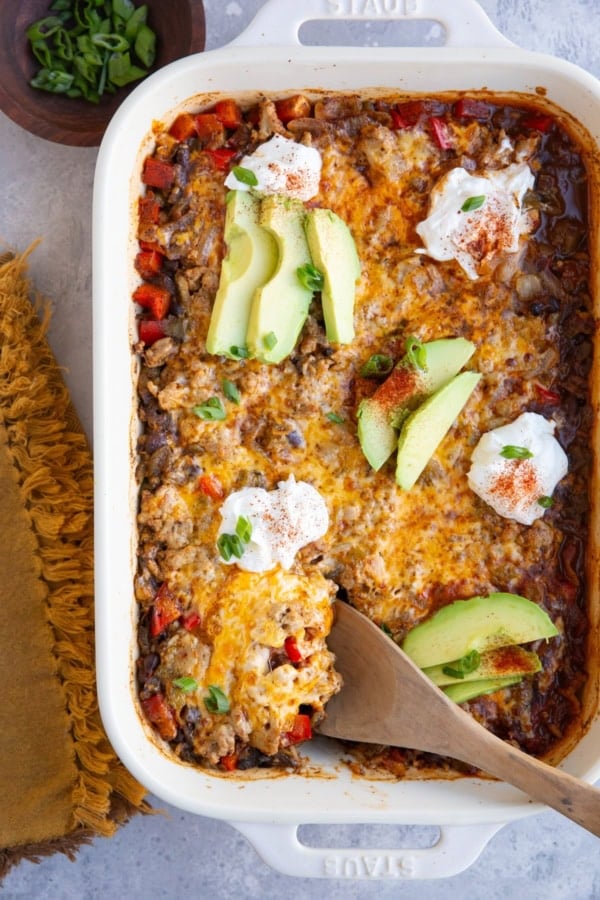
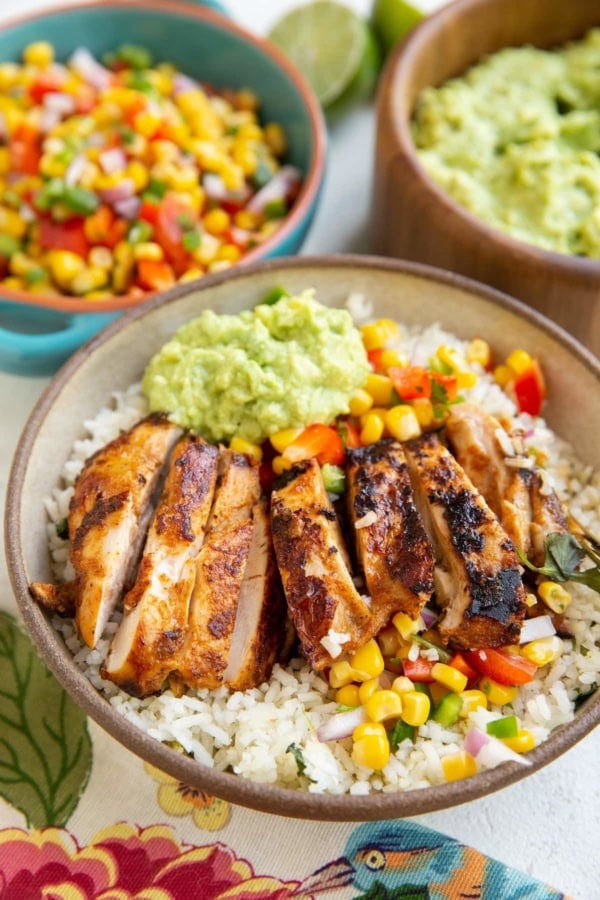
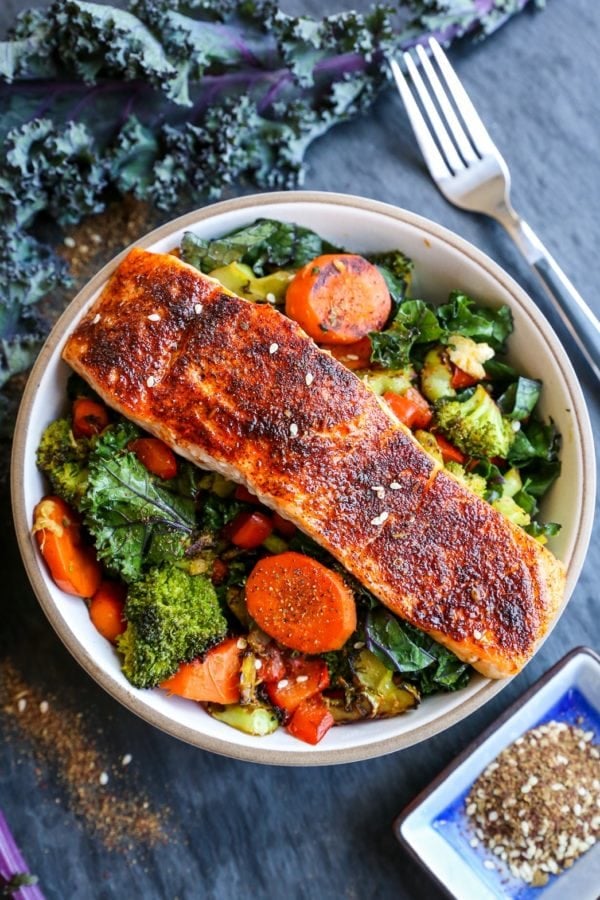
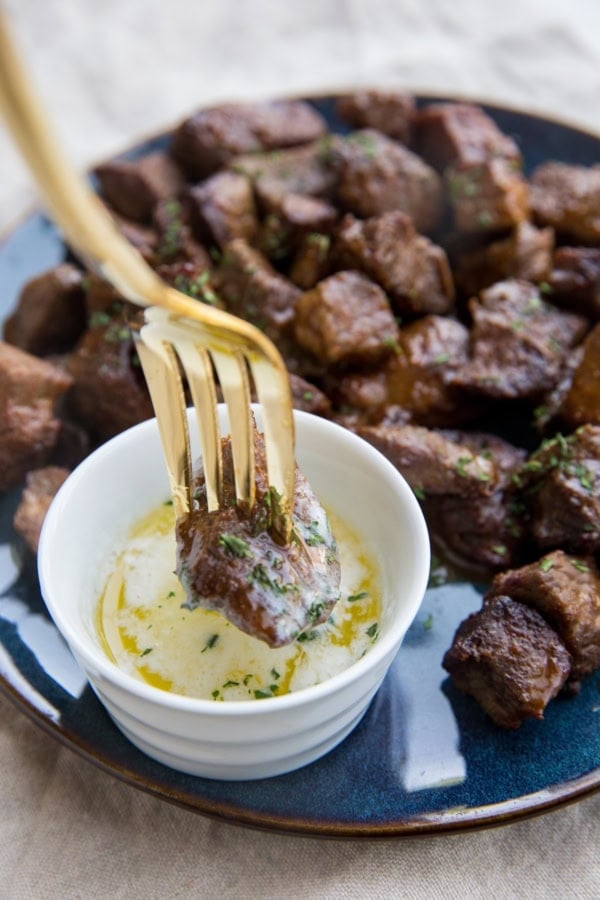









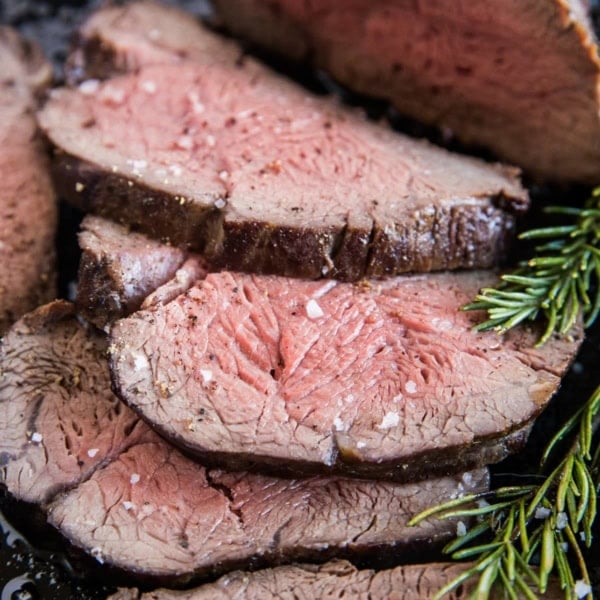
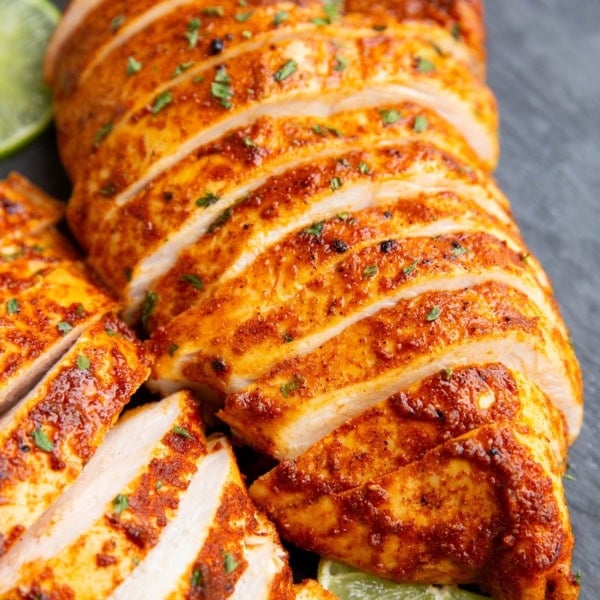
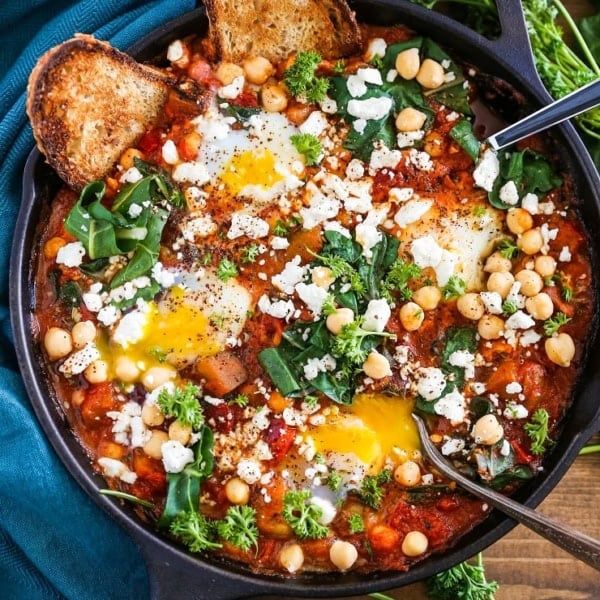
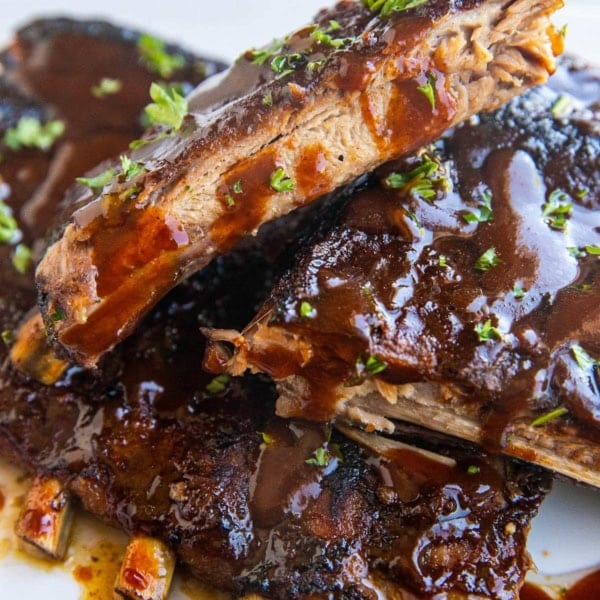
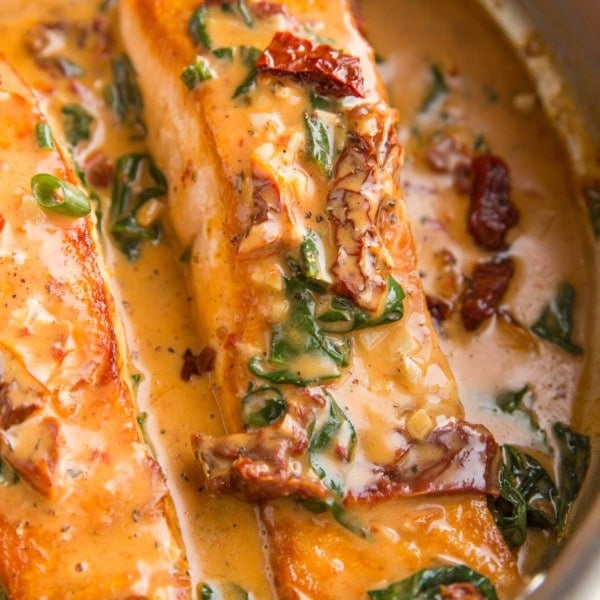
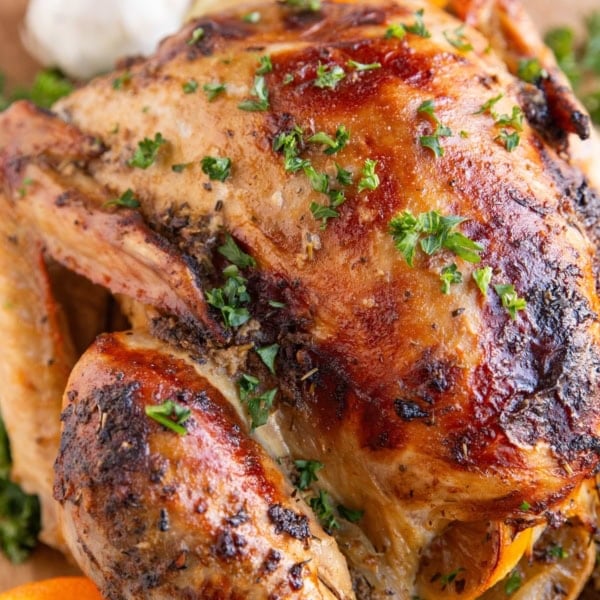
Two curios things. I let my beer ferment 10 days in one big tank, and then 1 day in the bottle with a little more sugar before putting it in the refrigerator. I measured the alcohol content. Not even 2%. But I get drunk just after 2 cups. It seems to a stronger effect than normal alcohol
Do you also know why I have to hark/sneeze when I try to drink the first sips? It seems to be releasing some strange gas
Hi there! What do you mean by strange gas? Does it smell off? If it smells rancid, the batch could be bad, in which case it would make sense that you have a reaction to it when you drink it. My other thought is you could possibly be reacting to either the ginger (have you noticed sneezing with other ginger-filled foods/drinks in the past?) or the type of bacteria or yeast that’s growing in the ginger beer. Without being there to try it myself, I can’t tell you what’s happening with certainty but I’d say if something seems off, it likely is off and you may want to start over. I hope this helps!
After I bottled the brew I placed in fridge right away. The next day I had tried some, and it only had a very small amount of bubbles formed while pouring. I did not add any flavoring; should I have still left the bottled brew at room temp for 2 days before placing in the fridge?
Hi Nicole,
It sounds like your bacteria and yeast ran out of food (needed some additional sugar). Was the ginger beer fairly sweet and bubbly before you bottled it?
@Julia, Yes, still sweet throughout the fermentation. I took it out of fridge and am letting it sit for a couple days. There’s still a small amount of carbonation but barely any bubbles. Thinking room temp may play a role? It’s been cold. Is there anyway for bubbles to come back?
Room temperature may play a role for sure. You can do a secondary fermentation by adding more sugar and/or fruit to the ginger beer before bottling it, and then it should be very fizzy 🙂
Hello,
I’ve done my first two batches with ginger and turmeric (seperately) and have a bit of experience with fermentation. The bug went well and now they are almost ready to bottle for a second fermentation. When I stirred the turmeric batch there is a thin film on the surface. Could this be mold or is this natural and I should continue on? It might smell a little strange, but I think that might just be in comparison to the ginger.
Thanks!
Hi Will! The white film could be yeast, which could be a sign the bug is doing great! If it smells foul, I would definitely toss it and start over. Turmeric does have an odd scent and flavor, so my guess is as long as it is just odd and not off-putting, it is fine. Still, if you have any doubt at all, it’s best to start fresh. No need to take chances if you think it’s off! xo
Thankyou Julia for your very intuitive instruction Manual
Much appreciated Regards Krissy
I made some raspberry ginger ale about a week ago. I topped off my jar of ginger bug with filtered water and gave a little bigger than maintenance. I’ve been feeding it .5oz ginger and a tsp of raw sugar.
2 questions
1. By the middle of the day it smells very strong with a similar smell that my sourdough starter gets when I’ve waited to long to feed. Should I be feeding more sugar or feeding it sugar
again in the middle of the day?
2. Ever since I topped the bug off with the water it’s completely dead. Not even a hint of a bubble. Do I just need to continue to be patient or did I somehow kill it?
Thank you for your time
Hi Emily,
You shouldn’t need to feed the starter more than once a day. You could always give it a little more if you think it needs it, but you don’t want to run the risk of over-feeding.
It’s possible that your starter was active and then died if it’s no longer bubbly. It’s tough to say without seeing it myself, but in general if you see bubbles, that means the starter is ready to go and there is no need to wait any longer. If it were me, I would wait another day or two and see if it picks back up. If it doesn’t within a couple of days, I would start over and simply use the starter as soon as it shows signs of life (is bubbly/smells fermented).
Question, what is the purpose of adding lemon juice to the probiotic ginger?
I accidentally put the lemon juice in my starter and not my gallon jar of ginger water. Thinking the lemon juice is too strong for a quart of starter, I put the whole quart of starter into my jug, stirred, and filled my quart jar of starter. Unless you tell me otherwise, I will try to remake my starter by feeding it like normal. So my question is what is the purpose of adding lemon juice? Is it flavoring, increasing the acidity, or something else?
Also, since my starter has some lemon juice, will I need to re-start the starter and make a new batch?
Thank you for your comments.
@Dale, Let me rephrase. I put the whole quart of starter into my gallon jug, then took from the jug a quart to use for starter. Hope this clarifies.
By the way, this is a great recipe! Both my starter and my jug have been excellent. Have been making weekly for three months straight.
Hi Dale!
So thrilled to hear you’re enjoying the ginger beer! The purpose of the lemon juice is for flavor. I’ve never tried adding it to the starter so I’m not sure what the result would be – it could be too acidic for the probiotics and yeast to grow, but it also may be fine, so honestly without trying it myself I’m not sure. I would say you could try to give it a few days and if the starter looks like it’s starting to bubble up then it’s working. If it seems flat and – well – lifeless then you may want to start over 🙂 Hope this helps!!
xoxo
My ginger starter is already on day 19 and still isn’t bubbling, although it did bubble a little bit early on, around days 4-6. It is being kept at about 66F° with some fluctuation. Is it normal for it to take this long?
Hi Daniel!
The amount of time it takes for the bacteria and yeast to activate varies greatly, but when yours was bubbling around days 4 – 6, that’s when you would have wanted to use the starter. It may still have some bacteria in it but I would start over. The good news for you is, it probably won’t take long to get the bug going 😀 xoxo
@Julia, Could I drink it, or should I just throw it out?
If it smells and looks good, it’s fine to drink but if there’s anything funky about it (if it smells rancid or has any white or green fuzz) then you’ll want to throw it out.
I’m in the process of following this recipe now and have my ginger bug fermenting. Very excited to try the final results!
I was wondering though, after you use some of the ginger bug for the ginger beer, how do you replenish the liquid? Do you just repeat the base ginger starter recipe and add that to the existing bug? Or do you just add water every so often? Or start a new ginger bug after you use up the first? Something else?
Thank you!
Hi Ben! So thrilled to hear you’re on your way to a wonderful batch of probiotic ginger beer! For the starter, you can add the same amount of water you take out and continue feeding it just as you were in order to keep it going 🙂 Let me know if you have any other questions!
Hello thanks for info
Is it ok to add some more bug if bubbling does not start after bottling, even in above 80 fahrenheit room
Regards
Hi there! Yes, absolutely. In fact, you can use all of the bug if you’d like. xoxo
Thank you for the simple and user friendly step by step guide. This is the first recipe I have read on your website and will definitely not be the last!
Can you keep the starter going indefinitely similar to kombucha, or is it only good for 2 batches? If so can you feed it a cup of water with sugar and ginger weekly?
Hi Larie,
I’ve never tried to keep a starter alive myself, so I’m not positive. My suspicion is it will work as long as it works, you know? So in this sense, I think it will stay alive, but in my experience, ginger beer starters are finicky in general, so they may be a bit sensitive and die fairly easily. I don’t think they will last as long as a Kombucha SCOBY, but I could be wrong! xoxoxo
Hi Julia, thanks fir this great post! I have a doubt: when you say “Once you can see and hear bubbles without touching the jar” you mean just seeing bubbles resting on the surface and in between the ginger grates or bubbles traveling bottom-to-top like in a champagne glass?
Yes, exactly! That’s what you’re looking for! The bubbles moving from bottom to top is your sign. Let me know if you have any other questions. xoxo
Hi Julia!! So I have been have a ton of fun with this. So far I tried the raspberry mint, very nice, tried fresh pineapple and banana, woa…very good, cranberry lemon using whole berry cranberry sauce, also very good, did one with frozen cherries another winner next, going to try apple spice next. I seem to be getting a product closer to coolers with about 3-4% alcohol.
Ooh, all of those flavors sound amazing! That’s cool you’re able to get so much alcohol out of it too…sounds like a great evening beverage! xo
Hi there! Successfully made my ginger bug and now on to the first ferment. After I use the 1 cup ginger bug in my first batch, do I refresh the ginger bug by replacing the cup of water (in addition to feeding it ginger and sugar)? Thanks!
Hi Amelia! No need to replace the water in the ginger bug…just keep feeding it fresh ginger and sugar 🙂 If you notice the water level is low, you can add more but if not, there’s no need for more water. xo
I started my probiotic journey three months ago. I’m on my 3rd batch. Ginger bug is crisp and growing strong. I am now ready to add fruit and herbs… Thank you for sharing as it helps my confidence that I’m on the right track. It’s like an ongoing experiment everytime.
I’m so happy you’re enjoying it, Tracy! Thanks for the sweet note! 😀
for your flavour quantities, are these per bottle or is=f you were to make 5 gallons worth of ginger beer?
great post!